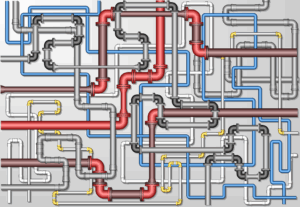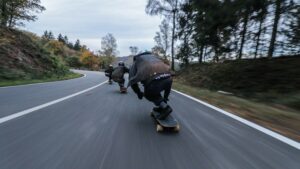We’d like to thank the All Things Innovation Intelligence committee members for their participation in the event: Gail Martino, Senior Program Manager, Unilever; Michele Sandoval, Director of Innovation, E&J Gallo Winery; Mike Hatrick, Group Director IP Strategy & Portfolio, Trucks, Tech, Volvo Group; Magnus Lindkvist, Trendspotter and Futurist; and Zeinab Ali, Vice President R&D Transformation, Campbell.
Overall, the first quarter, among our committee members, remained fairly consistent in terms of strategy—but not without some disruption and challenges. These challenges included the business environment, labor, supply chain issues and inflation.
These changes could also signal some opportunities, however. Sandoval noted, “Change can drive brands to be more creative, to push and propel business forward from Q4 to Q1.”
Hatrick added that despite economic, political and climate challenges, “People were still buying more and had more income. The news was still mixed.”
Still, in times of change, panelists noted, there perhaps brings some kind of clue about what the economy will bring. Martino cited the economy swings as both “Romeo and Juliet,” a mixture of both exuberance and foreboding, with supply chain, service and cost issues. “Things are uncertain, but it will shake out. Companies must prioritize on what’s important going forward.”
Join us for more in person at FEI in May and virtually at FEI Continued in June.
Campbell’s Ali cited the quarter as a “quarter of choices. Employees were faced with choices to keep the light on, and keep products on the shelf.” Companies had to be resourceful and think outside the box. Choices needed to be made.
As for the present circumstances, our panelists agreed, that the environment is difficult to discern. Sandoval said, “The first quarter strategy bred a lot of creativity and friction. More with less. Innovation was looking at it from a portfolio view, in terms of brands, price, personality.”
Hatrick agreed that brands are doing more with less. “Yet some companies are flourishing. It’s counterintuitive. Adversity is creating success. There is resilience but long term, can we keep pace?”
It’s a difficult to read economic environment, Lindkvist noted. “It’s hard to predict at the present moment,” he said, citing January’s positive signals with February’s inflationary numbers.
Martino noted that in the short term, it was all about optimizing the mix, price, and advertising spend. “Companies still need to plan innovation for this year—innovation in a downturn. What would you be doing now? Leverage the situation, accelerate some things.”
For Ali, it was a quarter where not all innovations were created equal. “There are good ideas and good resources. But ideas will be sorted. Is it going to make a difference for the consumer? Good top or bottom line? Ideas will be choiceful. Brands will focus not on ten things but two things to make a difference for the consumer and company.”
Looking Ahead
As for the future heading into the rest of 2023? As Martino put it, “Prioritize, prioritize, prioritize.”
Hatrick noted that brands must, “Remain laser focused. Maybe Romeo and Juliet will survive, creating options for the future.”
“Brands must be thinking now. Planning. Innovating. Thinking about ideas. Identifying problems and how to address them,” said Sandoval.
Lindqvist noted that change is all that is apparent. “There will be new technology, new tastes. There will be playful experimentation.”
“Internally, brands will go on with the past, stay traditional, and go to their library. Past is prologue,” noted Campbell’s Ali.
Join us for more in person at FEI in May and virtually at FEI Continued in June.
Contributor
-

Matthew Kramer is the Digital Editor for All Things Insights & All Things Innovation. He has over 20 years of experience working in publishing and media companies, on a variety of business-to-business publications, websites and trade shows.
View all posts





























































































































































